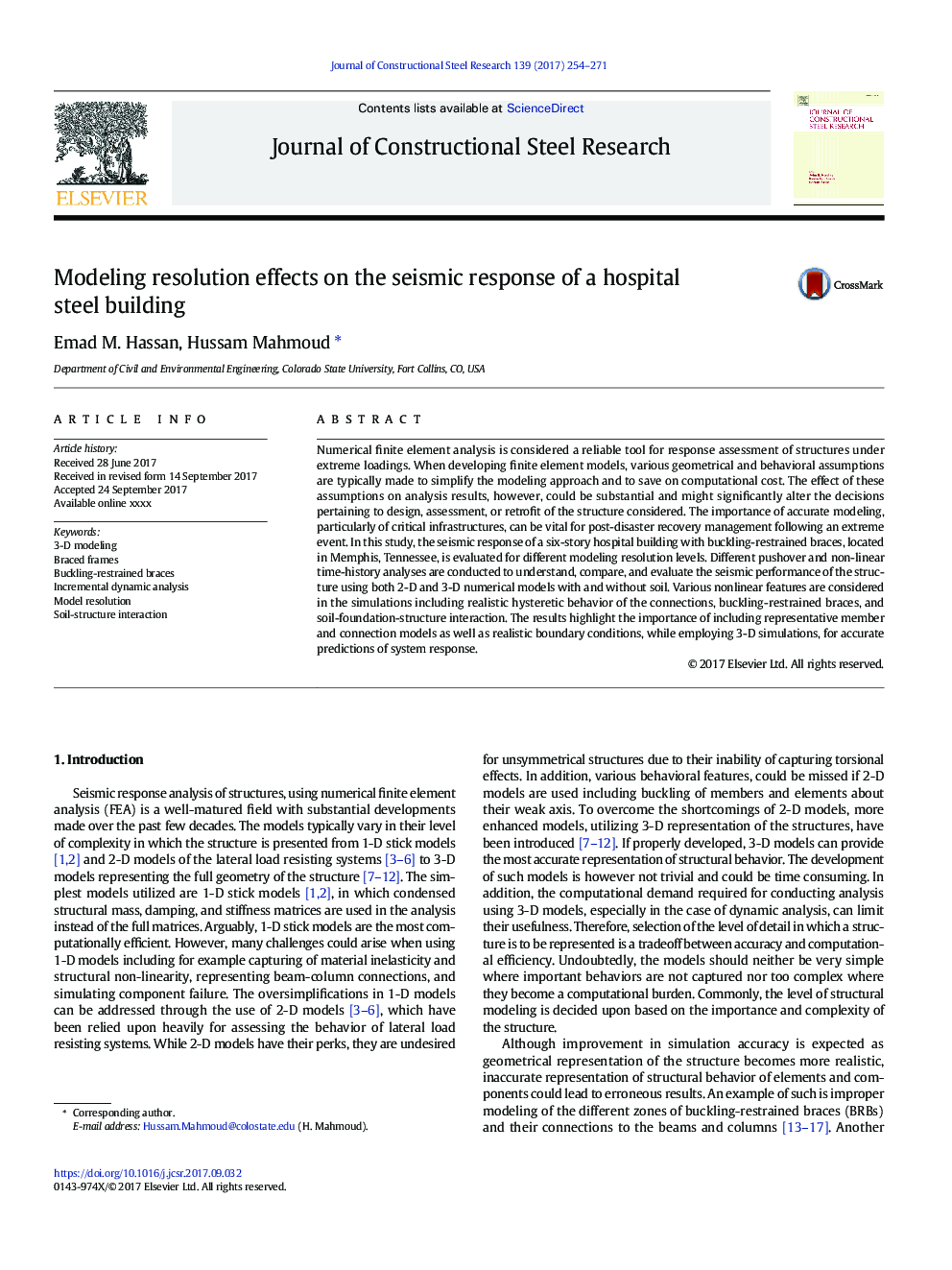| Article ID | Journal | Published Year | Pages | File Type |
|---|---|---|---|---|
| 4923252 | Journal of Constructional Steel Research | 2017 | 18 Pages |
Abstract
Numerical finite element analysis is considered a reliable tool for response assessment of structures under extreme loadings. When developing finite element models, various geometrical and behavioral assumptions are typically made to simplify the modeling approach and to save on computational cost. The effect of these assumptions on analysis results, however, could be substantial and might significantly alter the decisions pertaining to design, assessment, or retrofit of the structure considered. The importance of accurate modeling, particularly of critical infrastructures, can be vital for post-disaster recovery management following an extreme event. In this study, the seismic response of a six-story hospital building with buckling-restrained braces, located in Memphis, Tennessee, is evaluated for different modeling resolution levels. Different pushover and non-linear time-history analyses are conducted to understand, compare, and evaluate the seismic performance of the structure using both 2-D and 3-D numerical models with and without soil. Various nonlinear features are considered in the simulations including realistic hysteretic behavior of the connections, buckling-restrained braces, and soil-foundation-structure interaction. The results highlight the importance of including representative member and connection models as well as realistic boundary conditions, while employing 3-D simulations, for accurate predictions of system response.
Keywords
Related Topics
Physical Sciences and Engineering
Engineering
Civil and Structural Engineering
Authors
Emad M. Hassan, Hussam Mahmoud,
